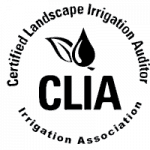Landscaping is an art form that requires creativity and skill. It’s also a lot of hard work. If you’re looking to add beauty to your yard, there are several ways to achieve this goal. One way is to use landscape lighting.
Landscape lighting is a great way to enhance the beauty of your yard without having to spend a fortune. In fact, you can get started with a few simple steps and end up with beautiful landscaping that looks amazing.
In this article, let’s walk through the process of installing landscape lighting and give you some ideas on how you can improve your yard using landscape lighting.
Step 1: Choose A Location For Your Lights
The first step in any project is choosing where you want it installed. You’ll need to decide if you’d like lights placed along driveways or pathways, near trees, shrubs, flower beds, etc. Once you’ve decided what areas will be lit, make sure they have enough space between them so light doesn’t spill over into other parts of the property. Also, consider whether you would prefer one type of light or multiple types.
The next thing you should do is determine which direction each area will face. This may seem obvious but many people forget about this important detail when planning their outdoor spaces. When deciding where to place your lights, think about the sun’s position throughout the day. Will you want all of your lights facing east? Or west? North? South? East-facing lights provide more even illumination than those that point north or south because the sunlight hits the plants at different angles as the sun moves across the sky during daylight hours.
If you plan to install lights around trees, remember that tree branches block out much of the light from overhead fixtures. To avoid losing too much light, choose fixtures that emit low levels of glare. These bulbs don’t cast shadows onto nearby objects and allow for maximum visibility.
When selecting a location for your lights, keep these things in mind:
• Avoid placing lights directly under large shade structures such as arbors or gazebos. They create dark spots that could cause problems for plant growth. Instead, look for locations away from buildings and other obstructions.
• Consider placement based upon the time of year. During winter months, you might not want to illuminate certain areas of your garden until springtime. Conversely, summer evenings call for additional lighting to help attract insects and birds.
• Look for places that receive direct sunlight only part of the day. Plants grow best when exposed to full sunshine for extended periods of time. By illuminating specific areas of your yard, you can ensure that plants receive adequate amounts of natural sunlight.
• Think about the size of your yard before making decisions regarding fixture height. Fixtures mounted higher off the ground tend to produce brighter beams of light. However, taller fixtures require longer power cords and cables. Be aware of potential safety issues related to working close to high voltage wires.
Step 2: Determine How Many Lights Are Needed And Where Each Should Go
Once you know where you want your lights located, you’ll need to figure out exactly how many lights you’ll need. There are two main factors to take into consideration here: the number of individual lights needed and the distance between each light source.
For example, if you were going to illuminate just three paths leading to your front door, you wouldn’t necessarily need 30 separate lights. But if you wanted to illuminate five paths leading to your home, then you definitely would need 50 lights.
You’ll also need to factor in the amount of light required by various plants. Some flowers and vegetables thrive in bright conditions while others benefit from lower light levels. You’ll have to experiment to find what works best for your particular needs.
To calculate the total number of lights you’ll need, multiply the length of each path times the width of each path. Then divide the result by 100 to arrive at the approximate number of lights you’ll be needing. Remember, however, that it’s always better to over-illuminate than to undersupply!
Types of Outdoor Lighting System
The next step will involve determining which type of outdoor lighting system you’d like to use. This decision depends largely on whether you prefer traditional string lights or more modern LED options. Both types offer their own benefits and drawbacks. Let’s examine both options so you can make an informed choice.
Traditional String Lights
String lights come in all shapes and sizes. Most people think they’re simply decorative items used primarily during holiday seasons. While these lights do provide a nice visual effect, they don’t actually perform any useful functions. That said, string lights aren’t completely useless. For instance, they can be used to highlight trees and shrubs. Additionally, they can serve as a security measure since they cast shadows that may deter intruders.
However, string lights are generally considered low-quality products because they lack durability. As a matter of fact, most string lights last less than one season. They also cost considerably more than other alternatives. So why bother? Well, if you live in a climate that experiences harsh weather conditions year-round, string lights might not be suitable for your garden. On top of that, string lights often contain toxic chemicals such as lead and mercury. These substances pose serious health risks to children who play around them. Finally, string lights are difficult to install.
LED Outdoor Light Options
On the flip side, LEDs are much easier to install than string lights. Plus, they produce far brighter results. Because of this, they’re becoming increasingly popular among homeowners. However, they still require professional installation. Fortunately, we’ve got you covered. We’ve created a guide specifically designed to help you learn everything about LED lighting systems. With our tips and tricks, you’ll soon become an expert when it comes to designing and installing your very own backyard oasis.
Water Wise Landscape offers a wide variety of landscape lighting products. Our landscape lighting systems are designed to enhance your home and garden. From decorative accent lights to security lighting, we offer a wide range of options to suit your needs. Your home will look amazing once you install our landscape lighting system! Call us today to learn more about our landscape lighting services!






